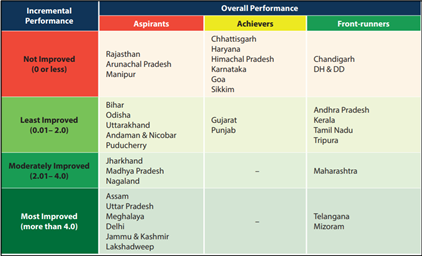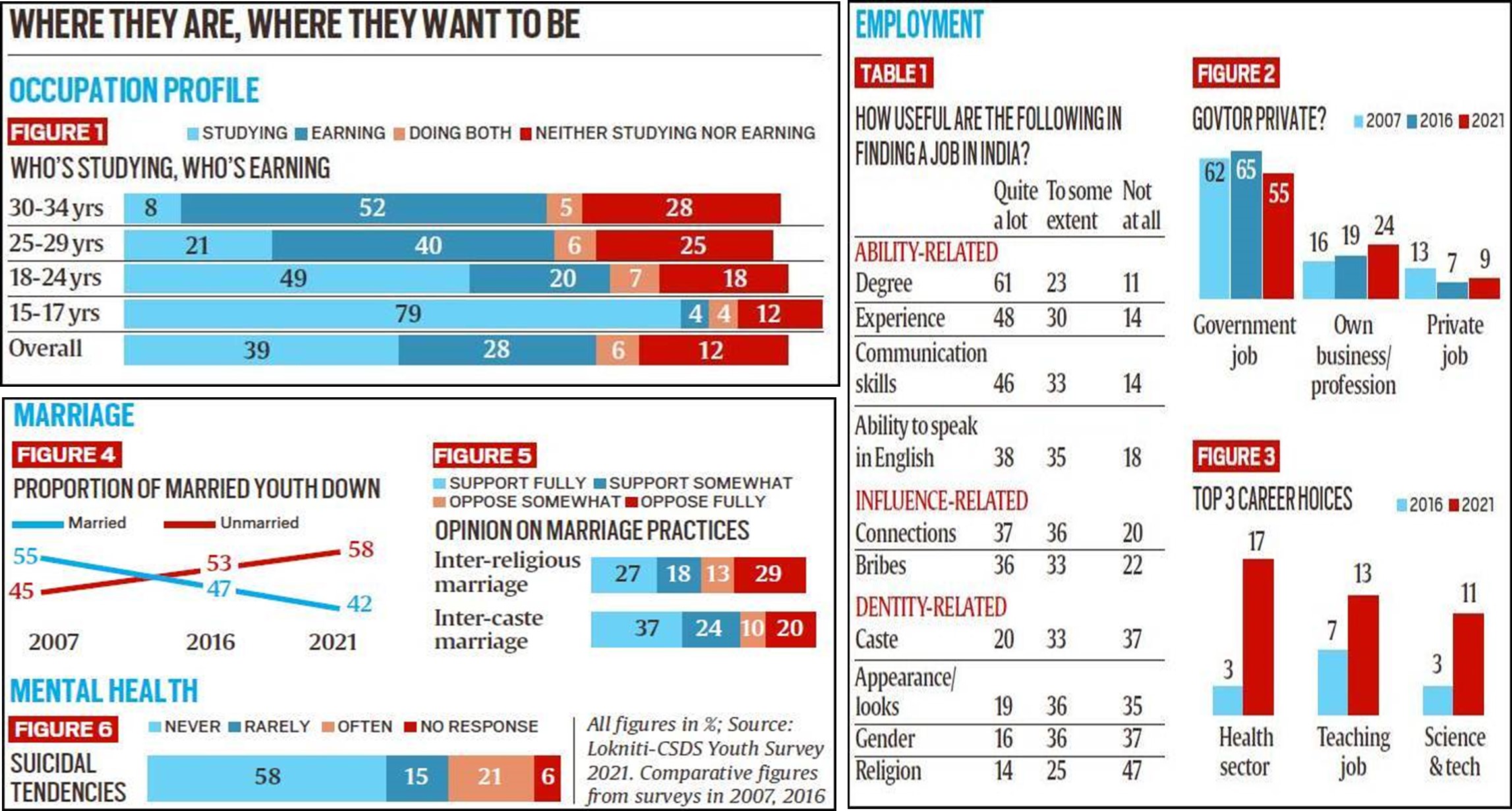Thursday, 30th December 2021
CAG report on 8 new IITs
In News
CAG report has highlighted lack of infrastructure development at 8 new IITs has affected student intake and quality of learning.
About the News
- The Performance Audit (PA) was undertaken for the period of 2019 and 2020 to assess the setting up of the new IITs set up in 2008 and 2009 including Bhubaneswar, Gandhinagar, Hyderabad, Indore, Jodhpur, Mandi, Patna and Ropar.
- The assessment was based on creation of infrastructure, procurement of equipment and services, financial management and academic performance.
What are the major findings of the report?
- Creation of Infrastructure: Issues in allotment and transfer of land persists even after a decade of the establishment. The lack of requisite land has affected student intake in all eight IITs, along with timely installation of equipment and proper fund management.
- Substantial delays in supply of equipment, delays in commissioning/installation of equipment due to failure of IITs in ensuring the site readiness and making proper assessment of required accessories is affecting the quality of learning.
- Financial Management: Proportion of the internal receipts (fees, interest, consultancy works, publications etc.) to the recurring expenditure of the IITs was very low forcing the IITs to be heavily dependent on Government of India (GoI) grants for meeting recurring expenditure.
- Academic Programmes and Research Activities: Only 33 per cent students have been admitted in all the eight IITs, against the sanctioned intake strength by Ministry of Education (MoE).
- Vacancies were observed across all eight IITs in PG/Ph.D programmes indicating a need for realistic assessment of the student intake as well as evaluation of these programmes with an objective of attracting required suitable students.
- Vacancies ranging from 5 to 36 per cent in faculty positions leading to increased workload on existing faculty in these premier institutions.
- Inadequate representation of students belonging to reserved categories (SC/ST/OBC) in PG and Ph. D enrolment in all eight IITs, showing that the benefits of education at premier technical institutes is not reaching these students.
- Functioning of Oversight Mechanism: In the area of research, non-government funded sponsored projects was low in all IITs ranging from 35 per cent to 14.31 per cent in terms of project funds.
- All the eight IITs were able to attract substantial funding from government sources towards sponsored research projects.
- Though a number of patents were filed, no patents were obtained in five IITs during 2014-19 indicating the need for improvement in outcome of research activities.
- Establishment of Research and Technology Development Council in the governing structure of each IIT are still in nascent stages
- Governing and Oversight Bodies: Inadequate supervision by the governing bodies has led to delays in execution/completion of the infrastructure works, thereby impacting inter alia student intake, introduction of courses, effective execution of research activities etc.,
Recommendations of the CAG for New IITs
- The Ministry, in coordination with IITs, may take proactive steps with the state governments for ensuring the adequate land availability to IITs for their infrastructure developments.
- Pacing up the infrastructure growth to ensure requisite sites are ready for procurement and timely installation of scientific equipment.
- The Ministry and IITs may identify avenues for generation of adequate internal resources in order to reduce the dependency on government grants and strengthen the financial position of all IITs.
- The IITs may take steps to increase the number of courses as well as student intake to ensure availability of quality education to a larger pool of students.
- Periodical reviews by IITs for the availability and means of attracting faculty to fill the vacant positions and to maintain adequate Faculty student Ratio.
- Measures to focus more on research by means of papers published, patents granted as well to attract funding from non-government sources to develop research and technology-oriented atmosphere.
- Fixing targets for enrolment in PG and Ph.D programmes and making efforts to ensure that these targets are met.
- MoE may take steps at galvanizing the Council of IITs, teaching methodologies, introduction of topical courses, setting high academic standards to meet the emerging manpower needs of the country.
- Governing bodies should exercise greater supervision over the activities of IITs for effective functioning and should meet as frequently as mandated in Act/Statute
Sources:
Atal Innovation Rankings 2021
In News
The Ministry of Education’s innovation cell has released the Atal Ranking of Institutions on Innovation Achievements (ARIIA) 2021.
About the News
- Atal Ranking of Institutions on Innovation Achievements (ARIIA) is a policy initiative of the Ministry of Education (MoE), implemented through AICTE and MoE’s Innovation Cell.
- It aims to systematically rank all major higher educational institutions and universities in India on indicators related to promotion and support of “Innovation and Entrepreneurship Development” amongst students and faculties.
- For the first time, ARIIA had a category for non-technical higher educational institutions. The other five categories are — centrally-funded institutions, state-funded universities, state-funded autonomous institutions, private/deemed universities, private institutions.
- The major parameters considered in ARIIA for ranking:
- Activities to promote and support innovation & start-up in the campus
- Pre-incubation and incubation infrastructures & facilities available in campus
- Academic courses offered by the institute on innovation, IPR and start-up
- Successful innovation and start-ups emerged from campus
- Investment, collaboration and partnerships with ecosystem enablers
- Research outputs; publications and intellectual properties generated
- Technology transfer and commercialization efforts
Key Takeaways of ARIIA 2021
- Technical ranking: The Indian Institute of Technology Madras (IIT Madras) has been recognised as the Most Innovative Educational Institute in India. This is the third time that IIT Madras has secured the first rank.
- IIT Bombay and IIT Delhi were placed at the second and third ranks respectively.
- In the Institute of National Importance, Central Universities & CFTIs category,
- IIT-Madras ranked the first followed by IIT-Bombay, IIT-Delhi and IIT Kanpur
- In government and government-aided universities, the rank-holders were –
- Rank 1: Punjab University followed by second and third ranking universities of Delhi Technological University and Netaji Subhas University of Technology.
- Under Institute of National Importance, Central Universities & CFTIs (non-technical) category, Indira Gandhi National Open University ranked 1 followed by Indian Institute of Management Kozhikode
About the Atal Innovation Mission
- The Atal Innovation Mission (AIM) is a flagship initiative set up by the NITI Aayog to promote innovation and entrepreneurship across the length and breadth of the country.
- All the initiatives of AIM are currently monitored and managed systematically using real-time MIS systems and dynamic dashboards.
- AIM is also currently having its programs reviewed by third party agencies for ensuring continuous improvements.
- Functions of the Atal Innovation Mission
- Entrepreneurship promotion through Self-Employment and Talent Utilization: Innovators would be supported and mentored to become successful entrepreneurs.
- Innovation promotion: to provide a platform where innovative ideas are generated.
Source:
- Atal Ranking of Institutions on Innovation Achievements (ARIIA) 2021
- Atal Innovation Rankings 2021: IIT-Madras tops again as most innovative educational institute
Image Source:
24th Financial Stability Report (FSR)
In News
The RBI released the 24th Financial Stability Report (FSR) recently
Findings of the Report
- Stress tests have revealed that banks' gross non-performing assets (GNPAs) may jump from 6.9 percent in September 2021 to 8.1 percent by September 2022 under the baseline scenario and to 9.5 percent under a severe stress scenario.
- Scheduled Commercial Banks would, however, have sufficient capital, both at the aggregate and individual levels, even under stress conditions.
- Emerging signs of stress in micro, small and medium enterprises (MSME) as also in the microfinance segment call for close monitoring of these portfolios going forward.
- The global economic recovery has been losing momentum in the second half of 2021 in the face of resurfacing COVID-19 infections, the new variant Omicron, supply disruptions and bottlenecks, elevated inflationary levels and shifts in monetary policy stances and actions across advanced economies and emerging market economies.
- On the domestic front, progress in vaccination has enabled the recovery to regain traction after the debilitating second wave of the pandemic. However, there are signs of slowing pace more recently; the corporate sector is gaining strength and bank credit growth is improving.
- The capital to risk-weighted assets ratio (CRAR) of scheduled commercial banks (SCBs) rose to a new peak of 16.6 per cent and their provisioning coverage ratio (PCR) stood at 68.1 per cent in September 2021.
- The ratio measures a bank's financial stability by measuring its available capital as a percentage of its risk-weighted credit exposure. The purpose of the ratio is to help banks protect their depositors and promote financial health.
About the Financial Stability Report
- The Financial Stability Report (FSR) is published bi-annually and reflects the collective assessment of the Sub-Committee of the Financial Stability and Development Council (FSDC) on risks to financial stability and the resilience of the financial system.
- These reports also assesses the resilience of the financial sector through stress tests.
- The reports take inputs from financial sector regulators i.e. RBI, SEBI, PFRDA, IRDAI including Ministry of Finance.
Sources:
- RBI releases the Financial Stability Report, December 2021
- Financial Stability Report, December 2021
- RBI Financial Stability Report: Banks' gross NPAs may jump to 9.5% by September 2022 in worst-case scenario
- Banks' NPAs may rise to 9.5% by Sept 2022 in worst-case Scenario
- Bank NPAs may go beyond 8% by September 2022, says RBI report
Rudyard Kipling
On December 30, 1865 Rudyard Kipling was born in Bombay. He worked for Anglo-Indian newspapers. His literary career began with Departmental Ditties (1886), but subsequently he became chiefly known as a writer of short stories. Kipling was the poet of the British Empire and its yeoman, the common soldier, whom he glorified in many of his works, in particular Plain Tales from the Hills (1888) and Soldiers Three (1888), collections of short stories with roughly and affectionately drawn soldier portraits. Kipling was the recipient of many honorary degrees and other awards. In 1926 he received the Gold Medal of the Royal Society of Literature. The Jungle Books are ranked among Kipling’s best works.

Source:
Winter Session 2021: Performance of the Parliament
In News
Recently the winter session of Parliament concluded.
Parliament Winter Session Highlights
- The winter session of Parliament was held from November 29, 2021 to December 22, 2021. Parliament adjourned one day ahead of schedule, having sat for 18 days.
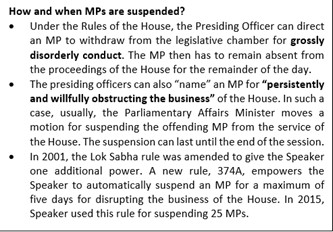
- On the first day, 12 MPs were suspended from Rajya Sabha for not observing parliamentary conduct on the last day of Monsoon Session 2021. On the penultimate day of the session, another Rajya Sabha MP was suspended on the grounds of disorderly conduct.
- Productivity: Lok Sabha worked for 77% of its scheduled time, while Rajya Sabha worked for 43%.
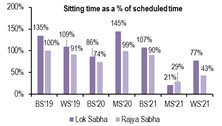
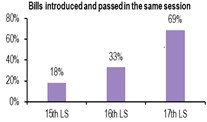
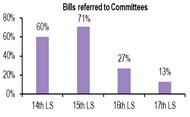
- Legislative Business: During this session, 12 Bills were introduced (excluding Appropriation Bills).
- Ten Bills were passed, of which six had been introduced in this session. These include the Farm Laws Repeal Bill, 2021, and the Election Laws (Amendment) Bill, 2021.
- Bills pending from previous sessions that were passed in this session include the Dam Safety Bill, 2019, and the Surrogacy (Regulation) Bill, 2019.
- One Bill namely the Biological Diversity (Amendment) Bill, 2021 was referred to the Joint Committee of both Houses of Parliament and five Bills are being referred to Standing Committees. In the current Lok Sabha, only 13% of the Bills have been referred to Committees.

- Time Spent on Passage of Bills: This session, Lok Sabha spent 32% of its sitting time on legislative business, while Rajya Sabha spent 48% of its time.
- The Farm Laws Repeal Bill, 2021 was passed in both Houses in less than 10 minutes without discussion. The Election Laws (Amendment) Bill, 2021 was passed within three hours of its introduction in Lok Sabha.
Important Bills passed by Parliament during the Winter session
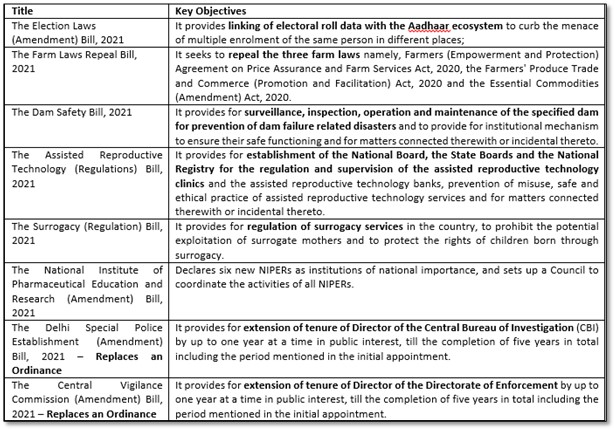
For more details on the above Bills, refer: https://edukemy.com/current-affairs/gazette/2021-12-17/electoral-reforms-bill
https://edukemy.com/current-affairs/gazette/2021-12-08/dam-safety-in-india
https://edukemy.com/current-affairs/gazette/2021-11-17/extension-of-cbi-and-ed-directors
https://edukemy.com/current-affairs/gazette/2021-11-17/extension-of-cbi-and-ed-directors
https://edukemy.com/current-affairs/gazette/2021-11-30/suspension-of-mps-from-parliament
Other Bills introduced but Pending in the Parliament
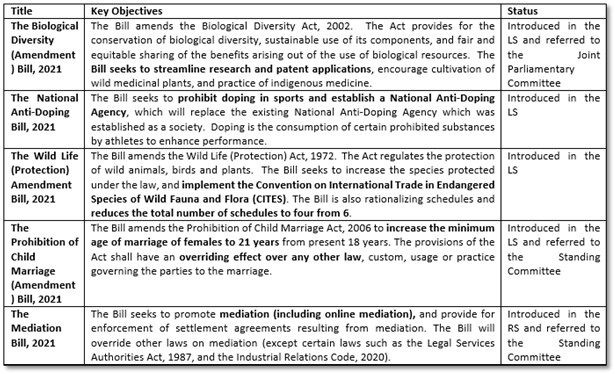
Question: Discuss the performance of the winter session, 2021 of the Lok Sabha
Sources:
E.O. Wilson
This is image of E.O. Wilson, known as the Father Of Biodiversity,. Longtime Harvard biology professor, revered conservationist and two-time Pulitzer Prize-winning author Edward O. Wilson died recently. He was 92. Wilson was the world’s leading myrmecologist, or ant expert, and spent much of his life advocating for protecting the planet and the species that call it home. For his dogged efforts, he earned himself a place in history among the most celebrated conservation heroes, including Henry David Thoreau, John Muir, Aldo Leopold and Jane Goodall. He wrote extensively about the insects and their social habits, and was instrumental in discovering how ants use pheromones, or chemical signals, to communicate. It is from his work with ants that he developed the concept of sociobiology, the idea that social behaviors in species, including humans, are the product of evolution. In the years leading up to his death, Wilson championed what he called “half-earth” ― the idea that human beings can save the natural world from a sixth mass extinction event by setting aside 50 percent of the planet for conservation.

Source:
Apatani textile
- Context: An application seeking Geographical Indication (GI) tag for the Apatani textile product has been filed by a firm with the Geographical Indications registry.
- The Apatani weave comes from the Apatani tribe of Arunachal Pradesh living at Ziro, the headquarters of lower Subansiri district.
- The woven fabric of this tribe is known for its geometric and zigzag patterns and also for its angular designs.
- The traditional handloom of this tribe is a type of loin loom, which is called Chichin, and is similar to the traditional handloom of the Nyishi tribe.
- It is portable, easy to install and operated by a single weaver, especially the female member of the community.
- The Apatani community weaves its own textiles for various occasions, including rituals and cultural festivals and the tribe predominantly weaves shawls known as jig-jiro and jilan or jackets called supuntarii.
- The people here use different leaves and plant resources for organic dying the cotton yarns in their traditional ways and only women folk are engaged in weaving.
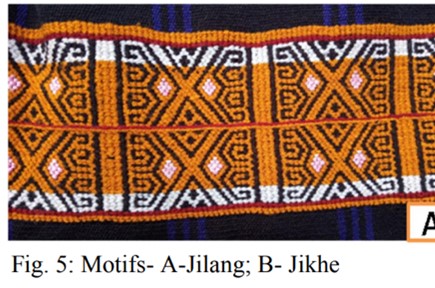

Source:
- Plea seeks GI tag for Arunachal Apatani textile product
- Arunachal Pradesh-Based Firm Files Plea, Seeks GI Tag For Apatani Textile Product
Image Source:
Extreme Cold Weather Clothing System
- Context: DRDO has handed over extreme cold weather clothing system ECWCS to five Indian companies.
- ECWCS is Indigenously developed by DRDO for Indian Army deployed in Extreme cold battel field such as Siachen Glacier.
- It can effectively insulate the soldier up to -50o It reduces the heat and water loss from the body due to respiration and provide water and wind proofing.
- It is more breathable and lighter than the previous imported version of ECWCS thus providing rapid sweat absorption and enhanced mobility to the soldiers.
- As India spends $8billion annually on importing ECWCS and other mountain kits, its introduction in army will save around $3billion annually.

Source:
- Rajnath unveils border roads, bridges
- DRDO hands over technology of extreme cold clothing system to 5 Indian firms
Image Source:
Konark Sun Temple
- Context: The Archaeological Survey of India has been working on a preliminary roadmap to safely remove sand from the interiors of Odisha’s sun temple.
- This Temple had a big Magnet in its interior to keep the structure intact as the stone structures were held together by the iron rods.
- However, the magnet is said to have disoriented the British ships during their sail in Bay of Bengal for which the Britishers decided to remove the magnet and fill its place with sand to maintain the stability 117 years ago.
- Currently steps are taken to remove this sand as it has caused a gap of 17 feet between the sand layer and the structure.
- The Konark sun temple has been constructed by King Narasimhadeva I of the Eastern Ganga dynasty (1238-1250) CE in Nagara style of Temple Architecture.
- It is a world heritage site recognized by UNESCO.
- It is also Known as the Black Pagoda

Source:
- Added by British for stability, sand inside Konark Sun Temple may be cleared
- Sand evacuation from Sun Temple to start soon
Image Source:
Pest-infested Iranian kiwis
- Context: The import of Iranian kiwis from Afghanistan to India has posed a major concern for apple dealers in Kashmir following a contagious quarantine pest threat found earlier this month in New Delhi.
- The government has informed Iran about the incidence of two quarantine pests, Aspidiotus nerd and Aonidella aurantii, in many shipments of kiwis from Iran.
- Kashmir produces 71% of the country’s apples. Experts in Kashmir say the ‘codling moth’, are highly dependent on fruits than leaves as a food source, are among the major pest threats for fruits, especially apples and pears.
- The Indian government has already conveyed to Iran that “the phytosanitary certificates issued by the National Plant Protection Organisation (NPPO), Iran, for fresh kiwi fruits shall not be entertained from India’s end from December 8, 2021.
- The apple dealers of Kashmir have also flagged the issue of “import of Iran’s fresh apple illegally and unlawfully under the trade name of Afghan apple and misusing the free trade agreement (FTA).
- J&K farmers have appealed for an analysis report and supervision on whether the import of Iranian fruit, which may affect or destroy horticultural produce and orchards, in order to take remedial measures.
Source:
Readjusting to the emerging realities: HT
Essence: The editorial focuses its theme on the smart ways India has adopted to tackle the crisis in Afghanistan and Myanmar and reduce their dependence of Pakistan and China respectively. With the return of military junta in Myanmar, there have been increased influx of the Chin community along the NE border. While previously, India would raise the issue of such crisis with Myanmar, the last interaction did provide indirect support to the persecuted community, trying to negotiate exile for Suu Kyi, etc. Similarly, with Afghanistan, India has provided humanitarian, medical aid and resumed flights with Kabul. Taliban has acknowledged India as a vital regional power and exchanged fire with Pakistan at border.
Both these incidents indicate of India’s increased engagements with the neighbors. India has clearly indicated that it doesn’t want to force its neighbors to return to democracy. But what it necessarily wants is to ensure that the internal political balance be maintained so that the civil wars and economic hardship do not force these countries from becoming excessively vulnerable and defenseless with Pakistan and China.
Why you should read this article?
- To understand the new strategies India is using to engage with neighbors going through internal turmoil.
- To analyze the result of new methods of inter-country participation for Indian subcontinent.
Source:
How cultural activities are impacting Yamuna’s water quality: HT
Essence: Delhi is dependent of the river Yamuna and its deteriorating water quality is causing both acute as well as chronic health problems. The poor water quality of Yamuna is primarily due to discharge of sewage and industrial wastewater into the river. But it is the cultural activities such as Immersion of idols made of cheap lead, chrome paints and plaster of paris during festivals, flowers, etc. which further deteriorate the quality of Yamuna water. According to the Central Pollution Control Board of India (CPCB), all the water quality parameters for river Yamuna being out of permissible limits make its water neither suitable for drinking nor other productive and non-productive purposes.
Government’s initiatives such as Yamuna Action Plan (YAP) in 1993 could not achieve desired results. Although, initiatives such as Jal Andolan and Yamuna Jiye Abhiyan meant for the revival of the Yamuna through intensive information-based campaigning, are being worked out at both government and public front, they did not focus on reducing the anthropogenic cultural activities on the river bank. Awareness raising activities, ecotourism initiatives, community participation along with improved water resource policies shall help in improving the water quality of Yamuna in the long run.
Why you should read this article?
- This article talks about the causes of deteriorating water quality of river Yamuna and how cultural activities worsen the problem.
- This article also talks about the necessary initiatives
Source:
Fostering Agri-Tech by Private players like Hitachi
Background
- The agriculture sector in India employs more than 50% of the total workforce and contributes around 17-18% to the country’s GDP. The global market for precision agriculture is expected to grow at an annual growth rate of 13.09% by 2022.
- The new-age agriculturists like ‘Hitachi’ are deploying innovation and technology to foster a new green revolution and precision farming in India is emerging as a popular feature of this transition.
How Hitachi worked out through technology in Farms?
- Hitachi Process Intelligence accelerated agricultural deployment by combining advanced processes and data analytics, creating a roadmap to speed transformation, using IoT in agriculture to gain actionable insights rather than paper and document work during pre and post harvest.
- Sustainable for Economy: Smart cameras are being used to identify ripened produce and agricultural robots are being programmed to pick specific crops like cotton, vegetables and fruits without incurring the cost of expensive seasonal labour.
- Scope for Transparency: In certain states of India, the Government is getting price forecasts for essential commodities several months in advance for planning for the Minimum Support Price (MSP).
- Benefits to Farmers: Hitachi’s GIS has helped the farmers with crop acreage estimation and crop damage/loss assessments
Quote: “Technology can advance yield and productivity, but only public policy can advance the income of farmers. There has to be a synergy between technology and public policy.”
- M. S. Swaminathan
Source:
Share the article
Get Latest Updates on Offers, Event dates, and free Mentorship sessions.

Get in touch with our Expert Academic Counsellors 👋
FAQs
UPSC Daily Current Affairs focuses on learning current events on a daily basis. An aspirant needs to study regular and updated information about current events, news, and relevant topics that are important for UPSC aspirants. It covers national and international affairs, government policies, socio-economic issues, science and technology advancements, and more.
UPSC Daily Current Affairs provides aspirants with a concise and comprehensive overview of the latest happenings and developments across various fields. It helps aspirants stay updated with current affairs and provides them with valuable insights and analysis, which are essential for answering questions in the UPSC examinations. It enhances their knowledge, analytical skills, and ability to connect current affairs with the UPSC syllabus.
UPSC Daily Current Affairs covers a wide range of topics, including politics, economics, science and technology, environment, social issues, governance, international relations, and more. It offers news summaries, in-depth analyses, editorials, opinion pieces, and relevant study materials. It also provides practice questions and quizzes to help aspirants test their understanding of current affairs.
Edukemy's UPSC Daily Current Affairs can be accessed through:
- UPSC Daily Current Affairs can be accessed through Current Affairs tab at the top of the Main Page of Edukemy.
- Edukemy Mobile app: The Daily Current Affairs can also be access through Edukemy Mobile App.
- Social media: Follow Edukemy’s official social media accounts or pages that provide UPSC Daily Current Affairs updates, including Facebook, Twitter, or Telegram channels.


